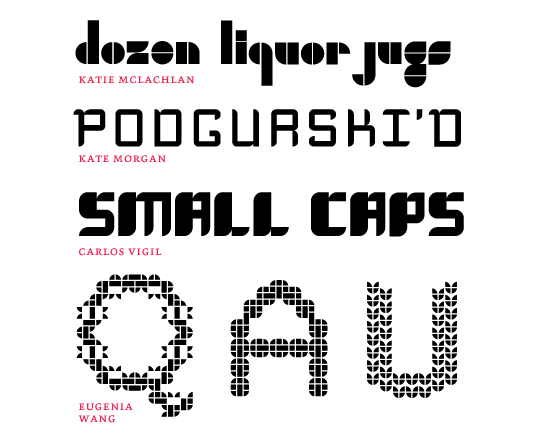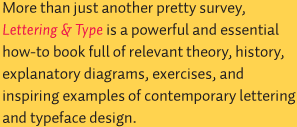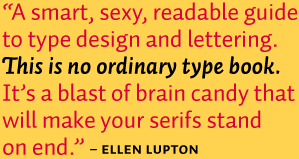Modular Alphabet
From modernist experiments to bitmap fonts, designers have explored the possibilities of creating letters from a reduced palette of shapes. The predefined forms and restrictive systems of modular letters make them a quick and approachable method for building letters. In spite of the constraints, new and surprising letterforms can be built with modular elements.
Create an alphabet using only a small set of basic geometric shapes. Begin by working on a grid, where the regular and repetitive modular elements feel most at home. Your grid can be reductive, expansive, or somewhere in between. After establishing a grid and a visual approach, design letters that represent the alphabet’s basic forms like H, O, M, R, A, or n, o, b, a, v. Stick to and refine the system as needed, until these initial letterforms feel consistent. Gradually construct more characters until you have designed the entire alphabet. Test the letters in word combinations periodically to expose flaws and inconsistencies.
Rules:

Maintaining equal widths and proportions, build a modular alphabet from these three geometric shapes: a 1×1 square, a 1×2 rectangle, and a 1×1 quarter circle. Use as many or few shapes as needed. Bear in mind that smaller grids provide a more limited set of design options.

Keep the shapes proportional; do not scale or distort any of the components. Do not overlap the elements or use a white shape knocked out of black forms.
Use a vector drawing program such as Adobe Illustrator for the easiest manipulation of shapes, or work by hand on a sheet of graph paper.
OR: Work online in Fontstruct to test create an actual working font. Stick to the basic shapes for your first font!

Examples of Student Work from the Maryland Institute College of Art







